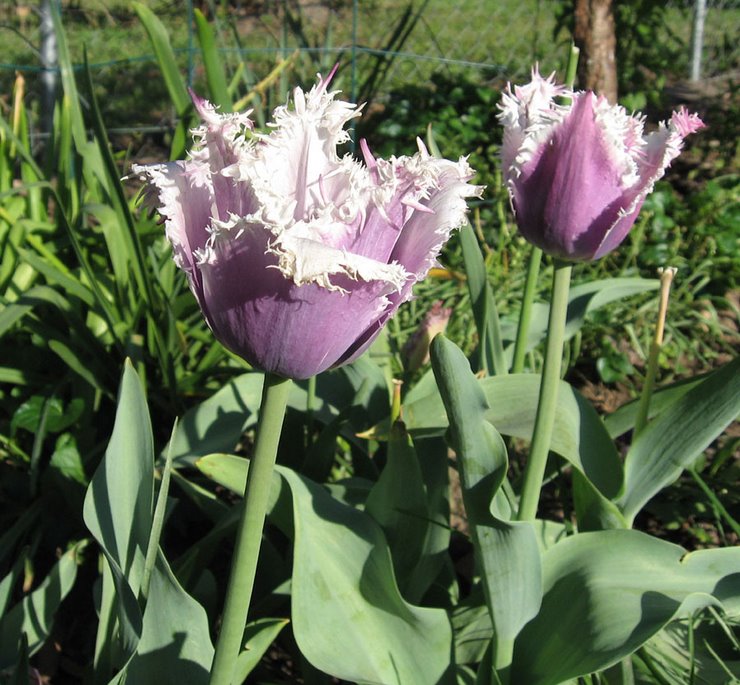Yesterday I told about emptying my tumbling composters, and spreading the compost. Today I want to tell about refilling the composters to begin another batch.
With a tumbling composter, you fill it up with all the materials at one time, rather than adding to it gradually. This, plus the frequent turning of the materials as you rotate it nearly every day, allows the composting to take place much more quickly. During the warmer months of the year, I get a batch of compost from these after about a month and a half.
Between times, I collect compostable materials in a large wheeled trashcan that I keep conveniently by my back door. Then when the time comes to start a new batch, I roll this can out near the composters and refill them from it. I always leave some of the previous batch of finished compost, to make sure the proper microorganisms are present to begin composting. As I shovel the materials into the composter, I make sure that everything is cut up into fairly small pieces, which allows it to break down more quickly.
As I add the materials, I sprinkle it with water from time to time, then rotate it to mix. You want the composting materials to be damp as a wrung-out sponge, not soggy. About every week I open the composter to check the moisture level, and see if I need to wet it a bit more. If it ever dries out, the composting process will be slowed or stopped.
When you collect materials to be composted, try to get about 2/3 "brown" or carbon-based materials such as dry leaves or grass clippings, shredded paper, peanut shells, hay or straw. The "green" materials are those richer in nitrogen, such as fresh leaves or grass clippings, fruit peels and rinds, vegetable scraps, feathers, hair, manure (from herbivores only), coffee grounds, and tea leaves. Try to find a variety of sources. Variety increases the microorganisms at work in your compost, and gives a more nutrient-rich finished compost.
When I first started composting, almost all I had were dried fall leaves, and it seemed like they just sat there, and never composted. I just didn't have enough kitchen scraps to provide a good balance of "greens," or the nitrogen-rich things. So I worked to find more stuff to add. I recruited several people to save coffee grounds for me. When they learned they could save them right in the used coffee filter, it didn't seem like much trouble to do. I just tear up the filter when I toss it in. Every time I brushed the dog, I saved the hair from the brush. I learned to save the tea bag when I made tea. Every little bit helps. Of course, once I got my first pet bunny, that took care of the problem. His litter box, with recycled newspaper litter and his special contributions, gave me a gold mine of great compostable materials.
There are organic materials that really are not safe to use--they may break down too slowly, or may attract rodents, or may contain pathogens that would endanger health. Avoid adding anything fatty or oily, like meat, fish, bones, or dairy; cat, dog or human feces; charcoal briquettes, peanut butter, or glossy colored paper.
Because I have saved composting materials all month long, when I empty one batch out of the composter, I am ready to fill it right up again, and get a new batch underway.

No comments:
Post a Comment